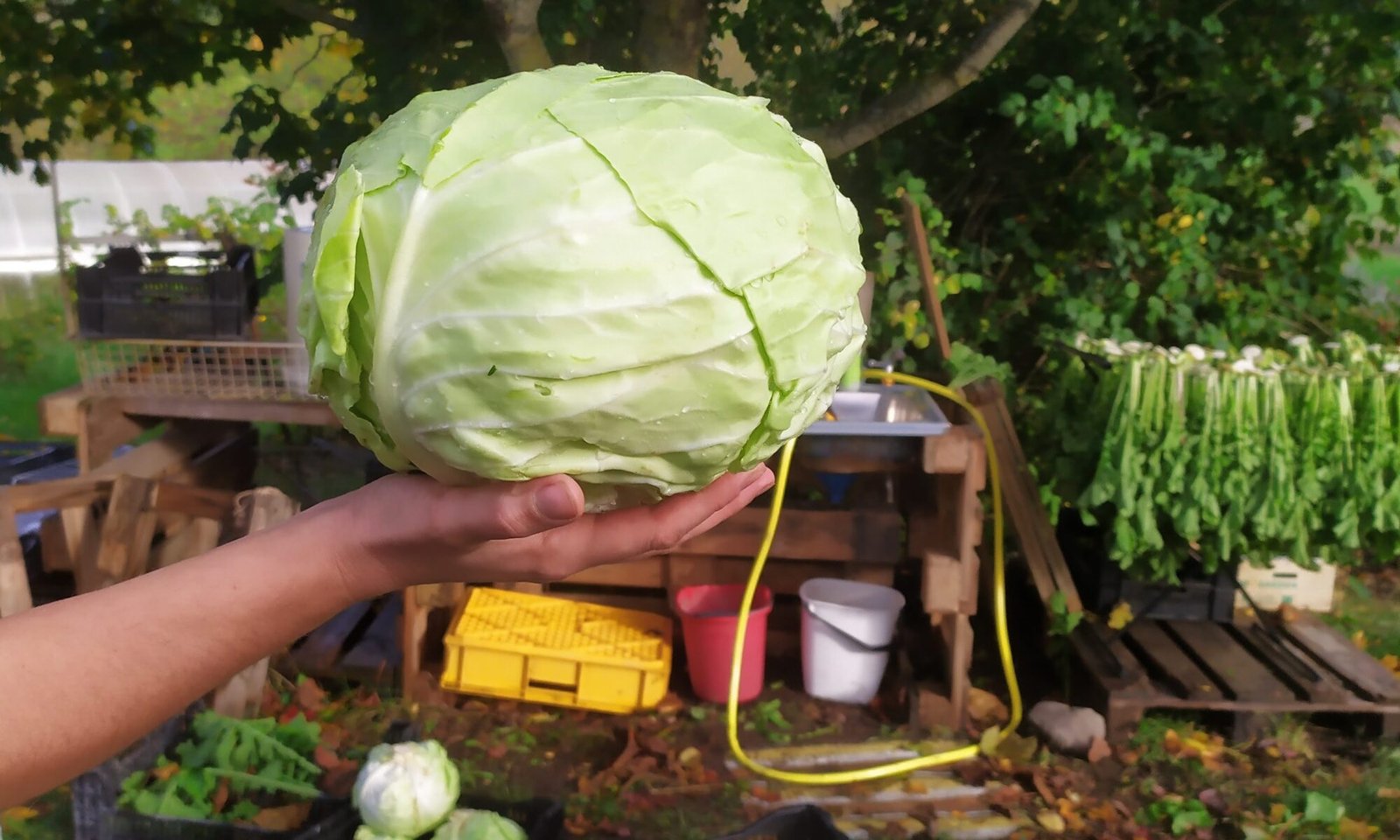It’s possible to lacto-ferment almost anything from your garden, but with a little planning, you can ensure good results by choosing varieties that are particularly well-suited for fermentation. Here are my best seed tips!
(Note: All grown in relatively heavy clay soil).
Cucumber/gherkin
My favorite cucumber is without a doubt ‘Crystal Apple’ (from Runåbergs). It yields abundantly, never becomes bitter, and always ferments well. If you lacto-ferment it with turmeric, it turns bright yellow and looks like lemons, which is fun (the recipe will be available around harvest time in July). It’s a bit slower than other outdoor cucumbers, so it’s best to start about eight weeks before planting out.
Finding a good pickling cucumber that is not a hybrid can be tricky, as many tend to become bitter. I would also recommend trying ‘Cool Customer’ from Runåbergs, ‘Muncher’ from Nordfrö, or ‘Vorgebirgstrauben’ from Lindbloms.

Cabbage
Kimchi made with cabbage is a true classic, and you can never have too much of it. My favorite variety is ‘Kaito’ from Lindbloms. It is compact and resembles the Asian varieties the most, albeit in a smaller size. It can be lacto-fermented whole or halved. The variety ‘Granaat’ from Runåbergs grows faster and has a good taste, but it is insanely long, which can be tricky if you want to lacto-ferment it whole…
If you sow cabbage after Midsummer, it won’t easily bolt and will be ready around mid-October. It can withstand quite a bit of frost.


Many people have been discouraged from growing cabbage due to all the other cabbage fans in the garden, but it’s definitely worth the effort! There’s nothing quite like the pride of producing a beautiful 3kg head of cabbage and then making the most delicious sauerkraut from it. Try non-hybrid varieties like ‘Domarna’ or ‘Donator,’ which produce large, dense heads in the autumn, or ‘Castello’ (F.1.) – a favorit variety of grower/breeder Eva Gustavsson, who runs Solsyran in Dalarna. You can find them all at Lindbloms.
Daikon is a must for kimchi, and it’s also fun to grow. Sow it at the end of July or beginning of August, and you can start harvesting in October. Daikon is very hardy. I have heavy clay soil that isn’t suitable for growing carrots, but daikon has no problem growing deep, and it’s surprisingly fast! So far, there aren’t many choices available, but I’ve had good results with ‘Minowase’ from Runåbergs.
Chili and peppers
A mixture of chili and bell pepper provides a nice color for kimchi without making it too spicy. With that in mind, I’ve grown ‘Ferenc Tender’ (from Runåbergs) and ‘Türkischer Ewürzpaprika’ (from Lindbloms) with good results. There are so many varieties of chili, so if you find one that produces plentiful large red fruits that are mild to medium in heat, you’ve hit the jackpot.

I’ve found that most chili plants produces chilis that vary in heat throughout the season, so a mixture of dried fruits from the entire season usually yields good results. It’s important to allow as many fruits as possible to ripen fully – green chilies and green bell peppers are difficult to work with. It’s essential to sow them early and provide the plants with plenty of warmth. Try saving seeds from different chili varieties – they usually remain true to their type even if you’ve grown different varieties close to each other.
Green beans
Lacto-fermented beans are a favourite among our CSA members and loved by both children and adults equally – I ferment them whole, including the stalks, making it one of the easiest fermentations (although the most time-consuming to harvest). For lacto-fermentation, choose snap beans that don’t become fibrous. I have grown ‘Marona’ (from Lindbloms) with good results for many years. Mix in some wax beans to make it visually appealing in the jar. Unfortunately, purple beans lose their color during fermentation, but they work just as well.

In addition to these, it’s good to include in your garden:
- An early and a late leek for kimchi and various other lacto-fermentations.
- onion
- garlic
- flowering dill
- parsley and other herbs
- Carrots (I never have much success with carrots, so I don’t have any specific tips…).
Wishing you a successful gardening season!
Brigid/FÖRÄDLAD

